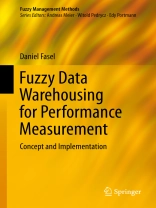The numeric values retrieved from a data warehouse may be difficult for business users to interpret, and may even be interpreted incorrectly. Therefore, in order to better understand numeric values, business users may require an interpretation in meaningful, non-numeric terms. However, if the transition between non-numeric terms is crisp, true values cannot be measured and a smooth transition between classes may no longer be possible. This book addresses this problem by presenting a fuzzy classification-based approach for a data warehouses. Moreover, it introduces a modeling approach for fuzzy data warehouses that makes it possible to integrate fuzzy linguistic variables in a meta-table structure. The essence of this structure is that fuzzy concepts can be integrated into the dimensions and facts of an existing classical data warehouse without affecting its core. This allows a simultaneous analysis, both fuzzy and crisp. A case study of a movie rental company underlines and exemplifies the proposed approach.
Cuprins
Introduction.- Fundamental Concepts.- Fuzzy Data Warehouse.- Application of Fuzzy Data Warehouse.- Implementation.- Evaluation and Conclusion.
Despre autor
Dr. Daniel Fasel is the founder, CEO and President of the Managerial Board at Scigility. Previously, he served as the first data scientist on the business intelligence team at Swisscom and was key in implementing No SQL technologies for explorative analytics during his time there. Before focusing on data science and No SQL technologies, he was a BI Engineer for the contract and customer field – a core component of the Swisscom Data Warehouse. He also served as a BI Architect and Administrator for the Oracle Hyperion Essbase cubes. In 2012, he received his Ph.D. in economics from the University of Fribourg.












